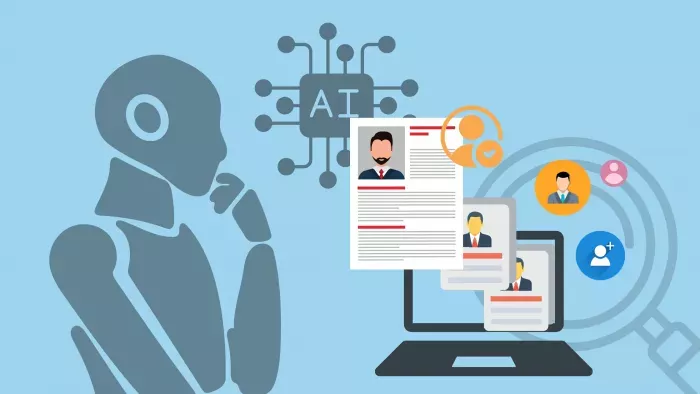
Selecting the right AI recruitment software means finding a platform that aligns with a company’s hiring goals, budget, and existing workflows. There are plenty of options out there, each with its own mix of features—automated resume screening, candidate sourcing, analytics dashboards, you name it. The trick is figuring out which tools actually support your priorities and help keep hiring fair and efficient.
The rise of automation has made recruitment both faster and more complex. As Forbes notes in its AI recruitment takeover report, hiring is undergoing a massive digital transformation, where AI is no longer optional but essential.
It’s easy to get overwhelmed by the choices, but narrowing in on what really matters—your core needs, how well the software integrates with current systems, and the level of ongoing support—makes a big difference. If your goal is to make hiring less of a headache, look closely at the features you’ll actually use, not just the shiny extras. For a more grounded approach to scaling your team the right way, this guide on reliable recruitment across sectors is worth a close read.
With that in mind, let’s explore how the best platforms simplify hiring without compromising on quality.

AI recruitment platforms use smart technologies to automate and enhance hiring workflows. Think resume parsers, chatbots, and analytics, all working together to help recruiters be more accurate, efficient, and keep candidates engaged.
AI in recruitment is about automating the stuff that bogs teams down and surfacing insights you might otherwise miss. Natural language processing (NLP) is a big deal here. It lets the system read and make sense of resumes, cover letters, even emails, so recruiters don’t have to comb through every detail themselves.
Chatbots are everywhere now, handling candidate questions or doing quick pre-screens through structured chats. And with machine learning, these platforms actually get better over time, learning from what’s worked (or not) in past hires, so the recommendations improve.
Most of these tools plug right into your applicant tracking system (ATS), so all your hiring data lives in one place. That means less time jumping between tabs and more time actually connecting with people.
And it’s not just hype: Statista’s AI in recruitment report shows that companies worldwide now rely on AI mainly for resume screening, candidate communication, and predictive analytics — clear signs of adoption at scale.
Today’s recruiting software packs in tools to tackle the most annoying parts of hiring. Here are a few standouts:
Analytics dashboards are pretty standard now, too—they track things like time-to-hire and which sources are actually bringing in good candidates. And if the software integrates with your other HR tools, that’s a big plus for keeping things running smoothly.
Chatbots and virtual assistants can answer candidate questions and handle early screenings around the clock. That’s a relief for recruiters, who can then focus on interviews or bigger-picture planning.
AI-powered tools like Promap can really change the game. Automated screening filters out folks who aren’t a fit before you ever see their application, which saves a ton of manual review. Matching features rank candidates by what you actually need, so it’s less guesswork.
With NLP and machine learning, these systems pick up on skills, experience, and even cultural fit from unstructured text. The analytics side helps you spot bottlenecks, where things are getting stuck, so you can fix issues faster.
AI chatbots give candidates quick feedback and status updates, which makes a good impression. All in all, the process gets faster and more objective, which is what most teams are after.
Choosing an AI recruitment platform isn’t just about ticking boxes for features. You’ve got to look at how well it fits with your current systems, whether it’s actually pleasant to use, if it can flex with your workflow, and how it handles security and compliance. Miss one of these, and you could end up with a tool that causes more trouble than it’s worth.
Making sure your new software plays nice with what you already use, like your ATS, CRM, and job boards, is crucial. If integration is clunky, you risk fragmented data and headaches for everyone.
Some platforms come with pre-built connectors for tools like Recruit CRM or Greenhouse, which makes setup a lot easier. If you’ve got unique needs, check if the vendor offers robust APIs for custom integrations.
It’s worth digging into how the AI platform handles data syncs between your ATS, CRM, and any external boards. Also, don’t forget to ask about technical support during and after integration. You want updates to be smooth, not disruptive.
No one wants to fight with clunky software. A clean, intuitive interface helps everyone (recruiters, hiring managers, admins) get up to speed quickly.
Look for drag-and-drop features, logical menus, and dashboards you can tweak to fit your workflow. Mobile access is a must these days, especially with teams spread out or on the go.
Check what kind of training resources the vendor offers. Good documentation, tutorials, or live support can make onboarding way less painful. And if the platform actually takes user feedback seriously, that’s a sign you’ll have a smoother ride as they roll out updates.
Every company’s hiring process is a bit different. The right software should let you set up custom workflows. Think automated triggers, notifications, and scoring rules that fit your approval chains and communication needs.
If you’re growing or have busy hiring seasons, scalability matters. The platform should handle more jobs, users, and candidates without grinding to a halt. Some offer flexible pricing or extra modules for when you need to scale up.
Data security isn’t just a checkbox—it’s about trust and staying on the right side of the law. Your AI recruitment tool should meet standards like GDPR or CCPA, depending on where you operate and what industry you’re in, especially when handling sensitive processes like background checks.
Look for encrypted storage, regular security audits, and multi-factor authentication. Some platforms also let you limit access within your team, which helps keep sensitive info locked down.
Ask about data retention and deletion policies, especially if you’re syncing with other systems. Make sure the vendor can back up their compliance claims with actual documentation if you ever need it for an audit.
Also, check out IAPP’s GDPR Resource Center for a breakdown of what compliance really entails.
This is where HR software overlaps with recruitment. For example, factoHR shows how broader HR platforms integrate AI to handle not just hiring, but compliance and workforce management — a model worth considering if your business needs end-to-end HR tech.
AI recruitment software can be a real boost for sourcing, engagement, and even building a more inclusive team. When you use the right features, you’re not just filling jobs; you’re improving your reputation as an employer and making the candidate experience a whole lot better.
AI sourcing tools dig beyond traditional job boards, surfacing passive candidates via LinkedIn Talent Insights, GitHub, and niche communities. This widens the talent pool and reduces time spent searching.
AI can also power automated outreach campaigns that feel personalized and timely. Meanwhile, chatbots and update triggers ensure candidates aren’t left guessing—a factor noted by Glassdoor as a top contributor to employer reputation.
AI can help take some of the subjectivity out of hiring. By standardizing resume screening and ranking candidates on actual job criteria, you reduce the risk of unconscious bias sneaking in.
Some platforms even anonymize applications by hiding names, photos, and other details early in the process. That opens the door for a wider range of candidates and helps level the playing field.
You might also find diversity analytics built in, so you can track progress on your goals and get alerts if the system spots potential bias. It’s not a magic fix, but it’s a step in the right direction.
Let’s be honest: admin work drags everyone down. Automated scheduling, document management, and evaluation forms can speed up those tedious steps, freeing up recruiters for more valuable conversations.
Collaborative hiring tools, like shared feedback portals and real-time evaluation dashboards, make it easier for everyone involved in hiring to stay on the same page. Centralized communication cuts down on confusion and missed messages.
And when your recruitment platform syncs with HR systems and calendars, things just flow better. Less admin, fewer delays, and teams can actually focus on what matters.
No-code AI platforms are also rising. Tools like MindStudio AI let recruiters and HR teams build custom AI workflows without deep technical skills, extending personalization into the hiring process itself.
Picking the right AI recruitment tool isn’t just about the features list. You’ll want to weigh things like reputation, integration options, what it’s actually like to use, how much it costs, and how responsive the support team is.
Lots of companies turn to established ATS options—Zoho Recruit and Recruit CRM are popular for their reliability and solid job board integrations. Zoho Recruit handles resume parsing and scoring well, making it a favorite for agencies with lots of applicants. Recruit CRM is often chosen by agencies needing strong pipeline management and customizable workflows.
Eightfold is known for deeper AI matching, rediscovering talent, and focusing on diversity. It goes beyond keywords, analyzing skills gaps and career paths. Skillate uses NLP to make shortlisting easier and cut down on bias during screening.
Evaluating Customer Support and Cost-Effectiveness
Cost structures are all over the place—some tools stick to monthly subscriptions tied to recruiter seats, while others go for a pay-per-feature approach. Zoho Recruit and Recruit CRM both have tiered plans, which is honestly a relief for smaller companies that don't want to dive in headfirst. Eightfold? That one's more for the big players, and you’ll probably have to ask them for a quote.
Customer support can make or break the experience, especially when you’re just getting started or something suddenly goes sideways. Zoho Recruit runs a global helpdesk and has a pretty hefty knowledge base. Recruit CRM stands out for its live chat and generally fast replies—something agencies on a deadline will appreciate.
The best AI recruitment software balances automation with fairness, speed with compliance, and personalization with scalability.
To recap:
AI-driven recruitment isn’t just about faster hiring — it’s about smarter, fairer, and more future-ready hiring. With the right choice, you’ll not only fill jobs but also build an inclusive, data-driven hiring strategy that scales with your business.
Be the first to post comment!